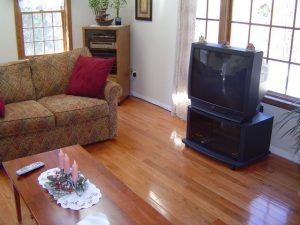How to Properly Measure for Wallpaper and Calculate Required Wallpaper Rolls
By Mark J. Donovan
|
|
One way to save on wallpaper installation costs is make accurate wallpaper measurements. Incorrectly measuring for wallpaper can lead to purchasing excess wallpaper rolls. On the flip side, incorrectly measuring for wallpaper and coming up short on the job site can often be an even bigger problem. If you have to go back to the wallpaper store and purchase additional wallpaper rolls that are not from the same paint lot, you could end up with markedly different colors for the same wallpaper type.
It’s important to note that same wallpaper patterns are manufactured in different paint batches or lots over time. |
This fact is indicated so with the different batch or lot numbers displayed on the wallpaper packaging. So even though two wallpaper rolls or packages may have the same pattern number, it maybe that they have slightly different color shades to them. Consequently when buying wallpaper, make sure to select wallpaper rolls with the same pattern and lot/batch numbers. This is one reason it is so important to obtain accurate wallpaper measurements. Coming up short could leave you with a less than professional wallpaper finish if you have to use wallpaper roles with different paint batches/lots.
How to Measure for Wallpaper on Sloping Walls
Measuring for wallpaper on sloped walls effectively involves calculating the hypotenuse of a right triangle and multiplying it times the width of the sloped wall. Simply determine the max height of the slope, relative to its base line, and then add the (height) Squared to the (base line width) Squared, and then take the square root of this number (hypotenuse). Then multiply this “hypotenuse” length times the width of the sloped wall to calculate the square footage area on the sloped wall. Again, always round up to the nearest foot.
By doing so you can minimize waste associated with pattern drop. Pattern drop is the amount of wallpaper that needs to be dropped to match it with the adjacent piece of hung wallpaper.
For help on finding a wood flooring installation contractor, see HomeAdditionPlus.com’s Wood Flooring Installation Bid Sheet. It will help ensure that you find and hire the right flooring installation contractor for your wood flooring project. In addition, it will help to ensure that your wood floor installation is completed on time and on budget.
Related Information
Additional Flooring Resources from Amazon.com
 |
 |
Free Home Addition Price Quotes with No Obligation!
Fill out our 3-5 minute quick and easy form, and receive a free price quote on a house addition from one of our prescreened and licensed home addition contractors. This process is free and there is no obligation to continue once you receive your house addition price estimate.


